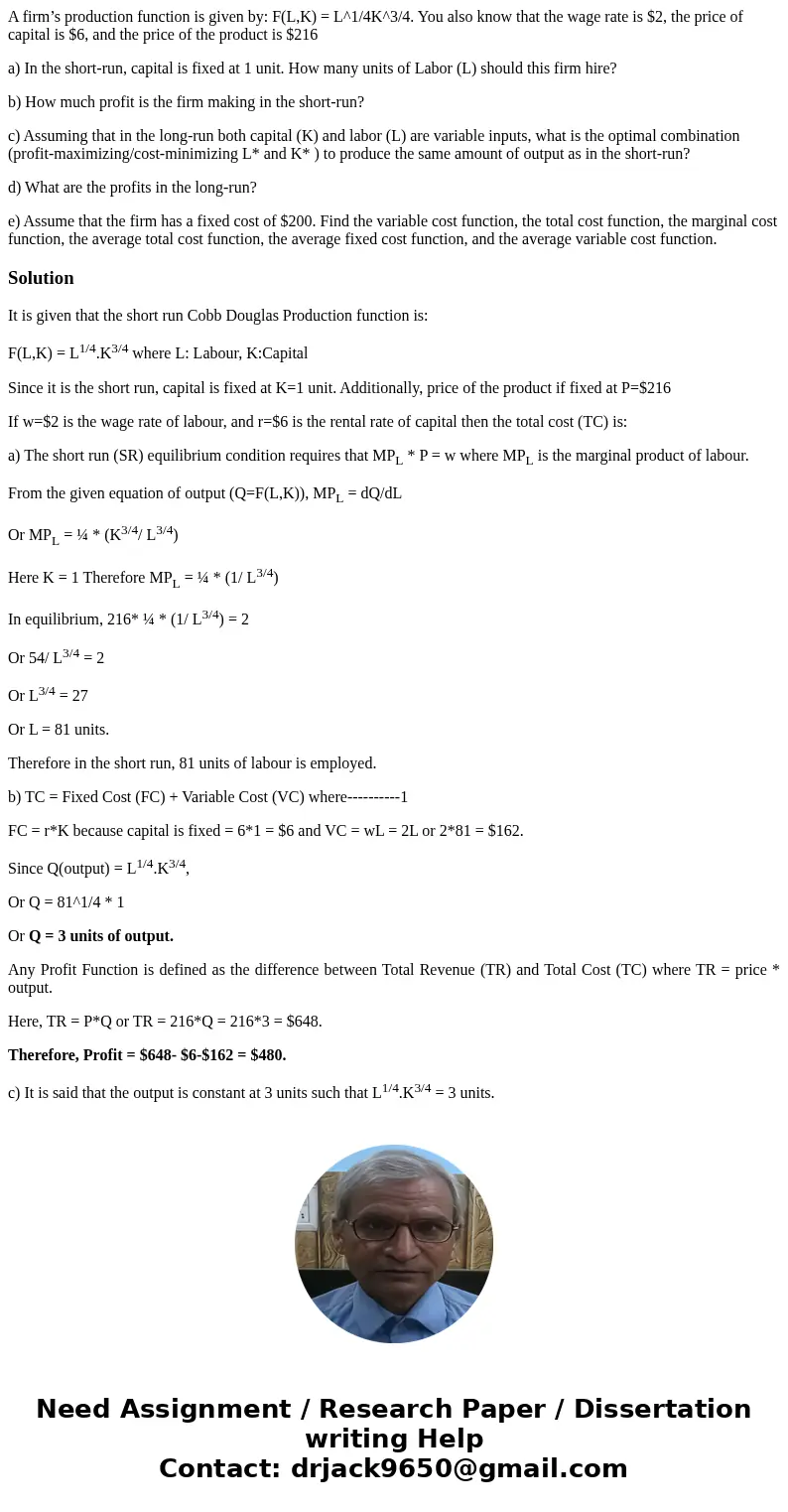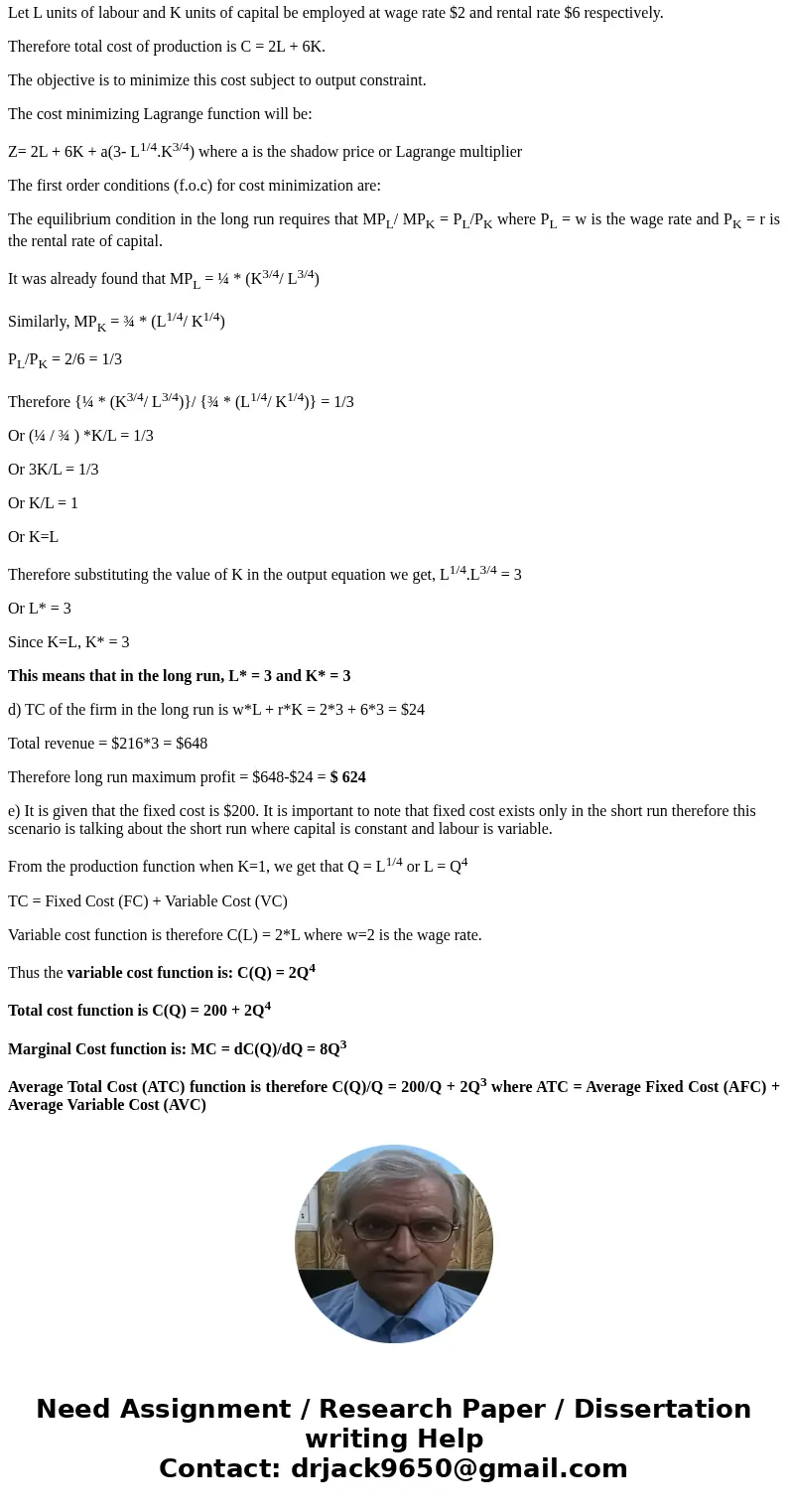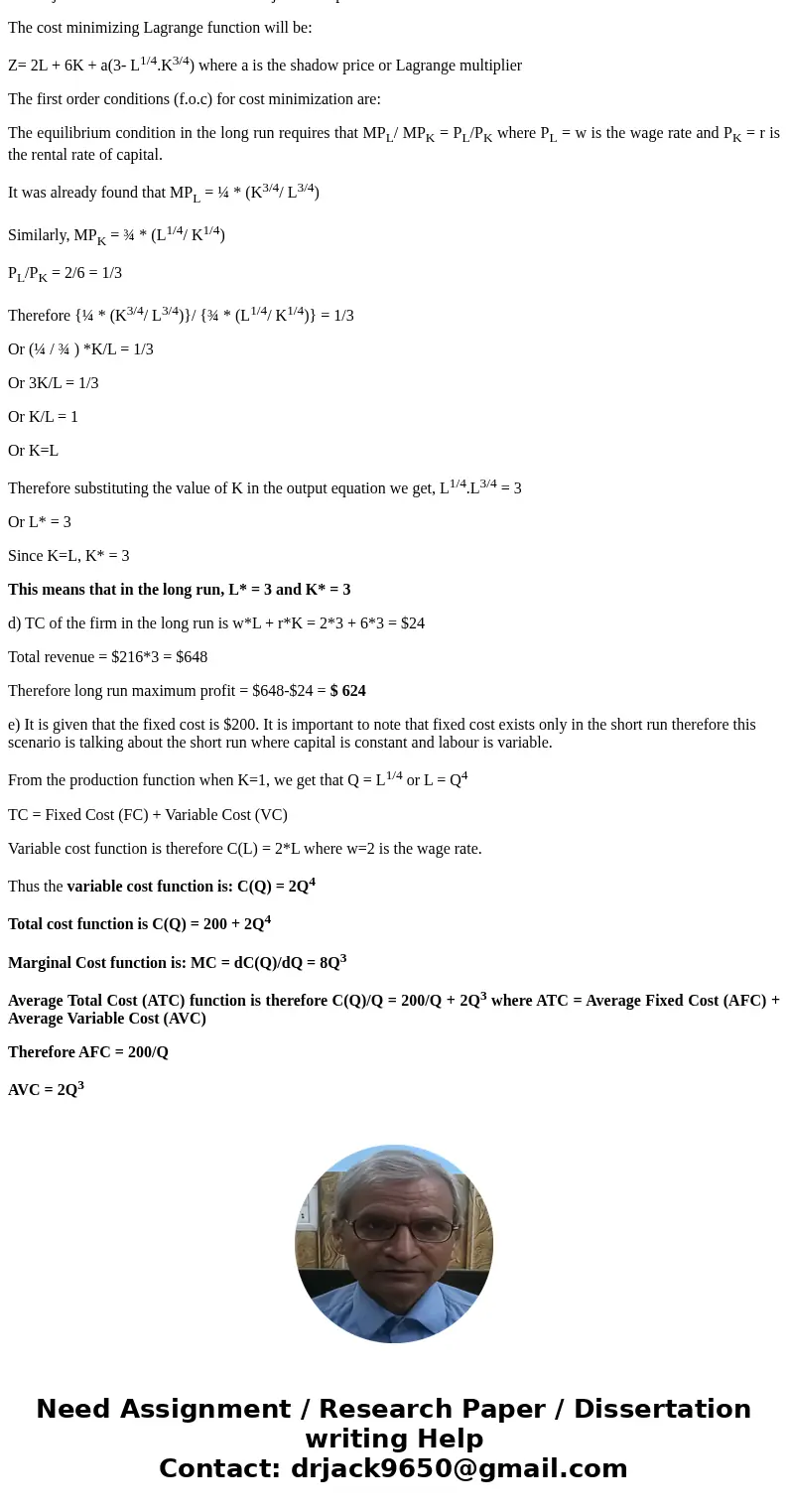A firms production function is given by FLK L14K34 You also
A firm’s production function is given by: F(L,K) = L^1/4K^3/4. You also know that the wage rate is $2, the price of capital is $6, and the price of the product is $216
a) In the short-run, capital is fixed at 1 unit. How many units of Labor (L) should this firm hire?
b) How much profit is the firm making in the short-run?
c) Assuming that in the long-run both capital (K) and labor (L) are variable inputs, what is the optimal combination (profit-maximizing/cost-minimizing L* and K* ) to produce the same amount of output as in the short-run?
d) What are the profits in the long-run?
e) Assume that the firm has a fixed cost of $200. Find the variable cost function, the total cost function, the marginal cost function, the average total cost function, the average fixed cost function, and the average variable cost function.
Solution
It is given that the short run Cobb Douglas Production function is:
F(L,K) = L1/4.K3/4 where L: Labour, K:Capital
Since it is the short run, capital is fixed at K=1 unit. Additionally, price of the product if fixed at P=$216
If w=$2 is the wage rate of labour, and r=$6 is the rental rate of capital then the total cost (TC) is:
a) The short run (SR) equilibrium condition requires that MPL * P = w where MPL is the marginal product of labour.
From the given equation of output (Q=F(L,K)), MPL = dQ/dL
Or MPL = ¼ * (K3/4/ L3/4)
Here K = 1 Therefore MPL = ¼ * (1/ L3/4)
In equilibrium, 216* ¼ * (1/ L3/4) = 2
Or 54/ L3/4 = 2
Or L3/4 = 27
Or L = 81 units.
Therefore in the short run, 81 units of labour is employed.
b) TC = Fixed Cost (FC) + Variable Cost (VC) where----------1
FC = r*K because capital is fixed = 6*1 = $6 and VC = wL = 2L or 2*81 = $162.
Since Q(output) = L1/4.K3/4,
Or Q = 81^1/4 * 1
Or Q = 3 units of output.
Any Profit Function is defined as the difference between Total Revenue (TR) and Total Cost (TC) where TR = price * output.
Here, TR = P*Q or TR = 216*Q = 216*3 = $648.
Therefore, Profit = $648- $6-$162 = $480.
c) It is said that the output is constant at 3 units such that L1/4.K3/4 = 3 units.
Let L units of labour and K units of capital be employed at wage rate $2 and rental rate $6 respectively.
Therefore total cost of production is C = 2L + 6K.
The objective is to minimize this cost subject to output constraint.
The cost minimizing Lagrange function will be:
Z= 2L + 6K + a(3- L1/4.K3/4) where a is the shadow price or Lagrange multiplier
The first order conditions (f.o.c) for cost minimization are:
The equilibrium condition in the long run requires that MPL/ MPK = PL/PK where PL = w is the wage rate and PK = r is the rental rate of capital.
It was already found that MPL = ¼ * (K3/4/ L3/4)
Similarly, MPK = ¾ * (L1/4/ K1/4)
PL/PK = 2/6 = 1/3
Therefore {¼ * (K3/4/ L3/4)}/ {¾ * (L1/4/ K1/4)} = 1/3
Or (¼ / ¾ ) *K/L = 1/3
Or 3K/L = 1/3
Or K/L = 1
Or K=L
Therefore substituting the value of K in the output equation we get, L1/4.L3/4 = 3
Or L* = 3
Since K=L, K* = 3
This means that in the long run, L* = 3 and K* = 3
d) TC of the firm in the long run is w*L + r*K = 2*3 + 6*3 = $24
Total revenue = $216*3 = $648
Therefore long run maximum profit = $648-$24 = $ 624
e) It is given that the fixed cost is $200. It is important to note that fixed cost exists only in the short run therefore this scenario is talking about the short run where capital is constant and labour is variable.
From the production function when K=1, we get that Q = L1/4 or L = Q4
TC = Fixed Cost (FC) + Variable Cost (VC)
Variable cost function is therefore C(L) = 2*L where w=2 is the wage rate.
Thus the variable cost function is: C(Q) = 2Q4
Total cost function is C(Q) = 200 + 2Q4
Marginal Cost function is: MC = dC(Q)/dQ = 8Q3
Average Total Cost (ATC) function is therefore C(Q)/Q = 200/Q + 2Q3 where ATC = Average Fixed Cost (AFC) + Average Variable Cost (AVC)
Therefore AFC = 200/Q
AVC = 2Q3



 Homework Sourse
Homework Sourse